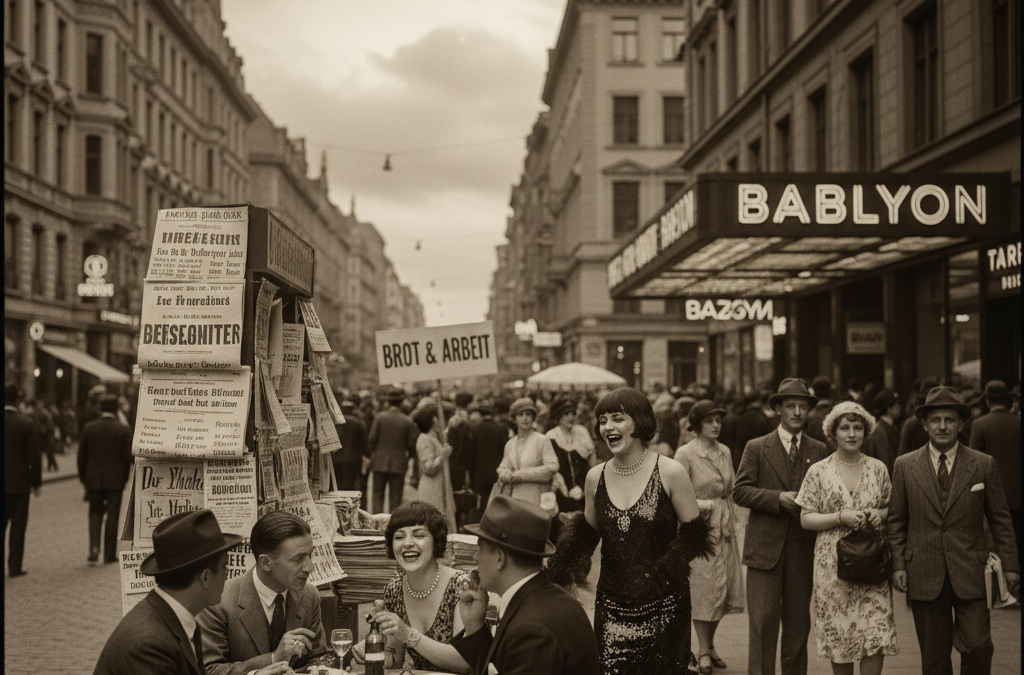History doesn’t repeat itself, but it often rhymes. Germany’s Weimar Republic — born from the ashes of World War I and dead within fifteen years — is one of the most sobering examples of how democracies can die not with a sudden coup, but with a slow, steady unraveling.
The story of Weimar Germany isn’t just about the rise of Adolf Hitler. It’s about how ordinary citizens, facing fear, division, and uncertainty, turned away from democracy itself. And if we look closely, the warning signs from that era echo eerily in the United States today.
The Promise and the Fragility of Weimar
After the First World War, Germany reinvented itself as a democracy. The Weimar Constitution (1919) was one of the most progressive of its time: it guaranteed free speech, women’s suffrage, and equal rights. But it was born under impossible pressure — war humiliation, crushing debt from the Treaty of Versailles, and the trauma of a nation that felt betrayed by its leaders.
Economic chaos followed. Hyperinflation wiped out savings. Middle-class Germans who had once trusted institutions suddenly found themselves destitute. In this climate, conspiracy theories and political extremism flourished. Parties on the far left and far right promised simple answers to complex problems, blaming “enemies within” for the nation’s suffering.
Sound familiar?
The Collapse of Common Ground
In Weimar Germany, politics became a zero-sum game. The center — the moderate parties that believed in compromise — steadily eroded. Newspapers were openly partisan, each telling its audience that the other side was destroying the country. Violence spilled into the streets between rival political groups.
By the early 1930s, many Germans had lost faith in democracy’s ability to solve problems. They craved order, stability, and someone who could “speak for the people” against a supposedly corrupt elite. Enter Adolf Hitler.
He didn’t seize power overnight. He was legally appointed chancellor in 1933. Democracy didn’t end with a bang — it was voted, cheered, and rationalized away.
Parallels in the Modern United States
The U.S. is not Weimar Germany — our institutions are older, stronger, and built on different foundations. But the warning signs are worth paying attention to:
- Polarization and tribalism: Political opponents are treated as enemies, not fellow citizens.
- Erosion of trust: Many Americans no longer trust elections, media, or the rule of law.
- Economic anxiety: Inequality and insecurity fuel resentment — the same emotions that hollowed out Weimar’s middle class.
- Disinformation: Weimar’s propaganda papers have their modern counterparts in algorithmic echo chambers.
- Cult of personality: When leaders present themselves as the “only one” who can fix things, democracy weakens.
None of these alone doom a republic. But together, they corrode the shared reality democracy depends on.
The Lesson: Democracy Requires Work
The fall of the Weimar Republic teaches a hard truth: democracy isn’t self-sustaining. It requires belief, participation, and restraint — even when we’re angry, scared, or convinced the other side is wrong.
When citizens stop trusting institutions, or when leaders put personal power above public good, democracy becomes hollow. And when fear replaces faith in democratic process, people will trade freedom for the illusion of safety.
Weimar Germany shows how quickly that trade can happen — and how devastating the consequences can be.
A Call to Vigilance
The lesson for Americans isn’t despair; it’s vigilance. The way to prevent a slide into authoritarianism is not to demonize the other side, but to rebuild trust, truth, and civic responsibility.
Weimar’s tragedy wasn’t inevitable. It was the result of millions of small decisions — to disengage, to look away, to give up on democracy.
Our challenge today is to make the opposite choice.

